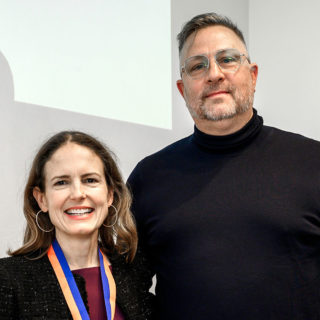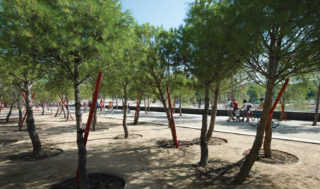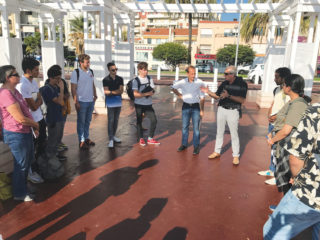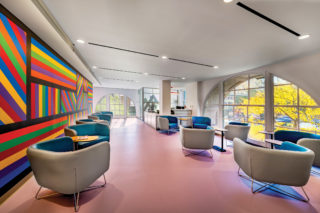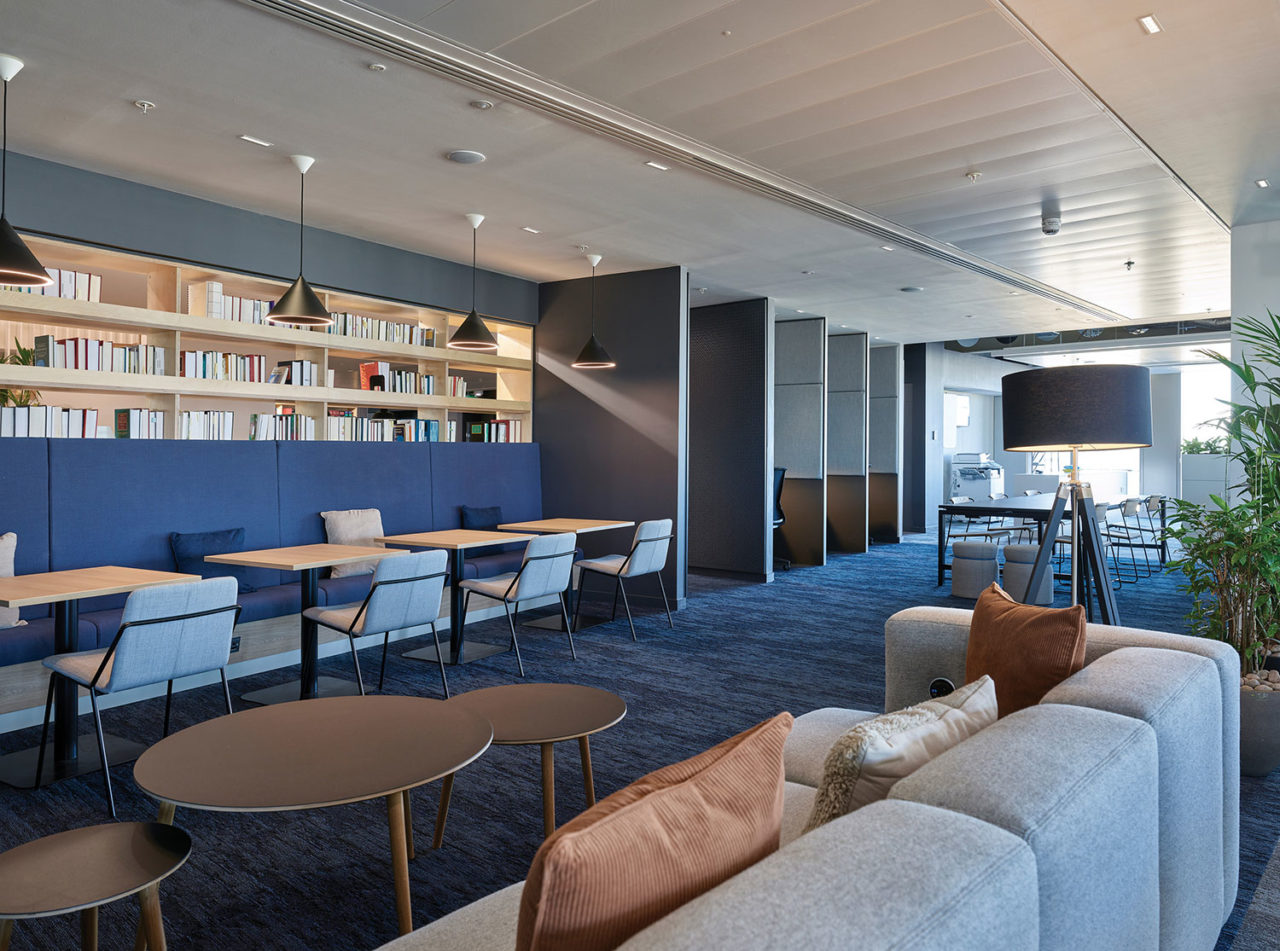
EDITOR’S NOTE: Toar Sadia’s master’s dissertation research explores the design preferences of neurodivergent populations for quiet spaces. The research was conducted using an online survey globally administered to neurodivergent adults to elicit their design preferences for quiet spaces, coupled with semi-structured interviews with professionals. Inferences were drawn from analysis of 312 survey responses and six interviews. The research contributed to the Quiet and Restorative Spaces chapter of the British Standards Institution publication PAS 6463 Design for the Mind—Neurodiversity and the Built Environment—Guide. A free copy of the research is available at doi.org/10.31224/osf.io/fkaqj.
Historically, inclusive design has focused mainly on catering to the accessibility requirements of people who have disabilities that are either apparent or have been well understood for many years. This includes people with mobility, severe vision, or hearing impairments, with special emphasis on spatial and reach requirements for wheelchair users, as is the case with the 2010 Americans with Disabilities Act (ADA) Standards for Accessible Design. While the ADA definition of disability encompasses both physical and mental impairments, design guidance for less apparent disabilities is rarely found in codes and regulations. As research continues in this critical area, it is essential that design guidance follows, for the good of the public as a whole.
Emerging topics in inclusive design expand beyond disability to other natural human variations. One such area is neurodiversity. Research has shown that our brains are unique, just like our fingerprints. Neurodiversity recognizes the natural and normal genetic variations in neurocognitive profiles across the population—essentially, the differences in how our brains are wired. People whose neurocognitive profile is close to what is considered average or typical are considered neurotypical, whereas those whose neurocognitive profile diverges from the average or typical are considered neurodivergent (for example, autism, ADHD, and learning differences). This includes people who may experience a progressive change or loss in mobility, coordination, sensation and/or cognition as a result of a neuro-degenerative condition, such as dementia, Parkinson’s disease, or multiple sclerosis.
When discussing neurodiversity, it is important to acknowledge that, while formal diagnoses are made when exceeding a certain threshold of predefined criteria, neurodivergence exists on a continuum. People (a) may not have a formal diagnosis of a neurodivergent condition, (b) may have neurodivergent traits that do not fit a formal diagnosis category, (c) may be mainly neurotypical with some neurodivergent traits, or (d) may have a mix of various neurodivergent conditions. While diagnoses may appear to categorize conditions in a neat manner, the nature of our diversity is not so orderly.
There is a strong association between having neurodivergent conditions or traits and having sensory and/or information-processing differences. These are the subjects of focus when designing for neurodiversity. People with sensory-processing differences may experience hypersensitivity (over-responsivity) and/or hyposensitivity (under-responsivity). Hypersensitivity may cause someone to be more susceptible to sensory overload, which is a state of overwhelm when the brain struggles to sort through and process all the information it is receiving. This may lead to extreme irritability, restlessness and/or discomfort, and may cause an increase in heart rate, breathing, and/or blood pressure, resulting in confusion, anxiety, and/or mental distress. People may try to block out the sensory stimuli by closing their eyes, covering their ears, and/or seeking a space to escape to.
Conversely, hyposensitivity may cause someone to seek stimulation through sensory input, which may appear excessive, such as a constant need to move or touch things. They may be drawn to loud sounds, bright lights, and vibrant colors, and may have high pain tolerance. Lack of sensory input at the level they require may lead to reduced brain activity, which may cause problems in attention and concentration, procrastination, and depression. A person is not limited to being either hypersensitive or hyposensitive, but can have a combination of both at various degrees of severity.
Having sensory-processing differences may lead to feelings of overwhelm or underwhelm, both which have negative health and well-being outcomes. While environmental factors can lead to the dysregulation of one’s senses, a supportive environment can help self-regulation, enabling one to return to a balanced state.
Research I have conducted, “Exploring the Design Preferences of Neurodivergent Populations for Quiet Spaces,” highlights the differences between hypersensitive versus hyposensitive design preferences as they relate to the design of a quiet space. A quiet space is a calm environment aimed at providing relief from sensory overload, distress, or anxiety, as well as facilitating sensory regulation. While hypersensitive subjects preferred a neutral, low-stimulus environment, hyposensitive subjects favored an active, stimulating environment, sometimes called a “sensory room.” Therefore, it is essential that quiet spaces be designed to provide a neutral, low-stimulus baseline environment, with active and stimulating optional additions by individual choice, while ensuring that the experience of one does not compromise the experience of the other.
While the research has shown differences between design preferences for quiet spaces, biophilic design received positive responses across sensory profiles. Whether expressed by the use of greenery, natural materials, or patterns, biophilia appears to promote relaxation for everyone. This conveys the important role nature has in helping us regulate our senses, calm ourselves, and be in harmony with our surroundings. To further emphasize the importance of biophilia, some people with neurodivergent conditions may be particularly sensitive to certain unnatural design qualities, such as repetitive geometric patterns with high contrast (especially linear patterns such as stripes), repetitive sounds (e.g., ticking clock, whirring fan), or imitations of biophilia (such as fabricated sounds of nature).
Providing a clear environment that offers variety, flexibility, and control (choice) is fundamental in designing inclusive environments in general, and quiet or restorative spaces in particular. Typically, a single design solution will not be able to address the diverse needs of a group or population, so a variety of options from which to choose should be offered. Additionally, for those who may be in distress, often because they are experiencing something outside their control, providing them with the option to control or choose their environment in a way that responds to their personal needs can give them a feeling of empowerment and help them restore their mental well-being. This can be achieved, for instance, by providing window coverings to control daylight and outside views; access to lighting controls, including dimmers and color tuning; optional sounds to choose from; and a variety of furniture choices.

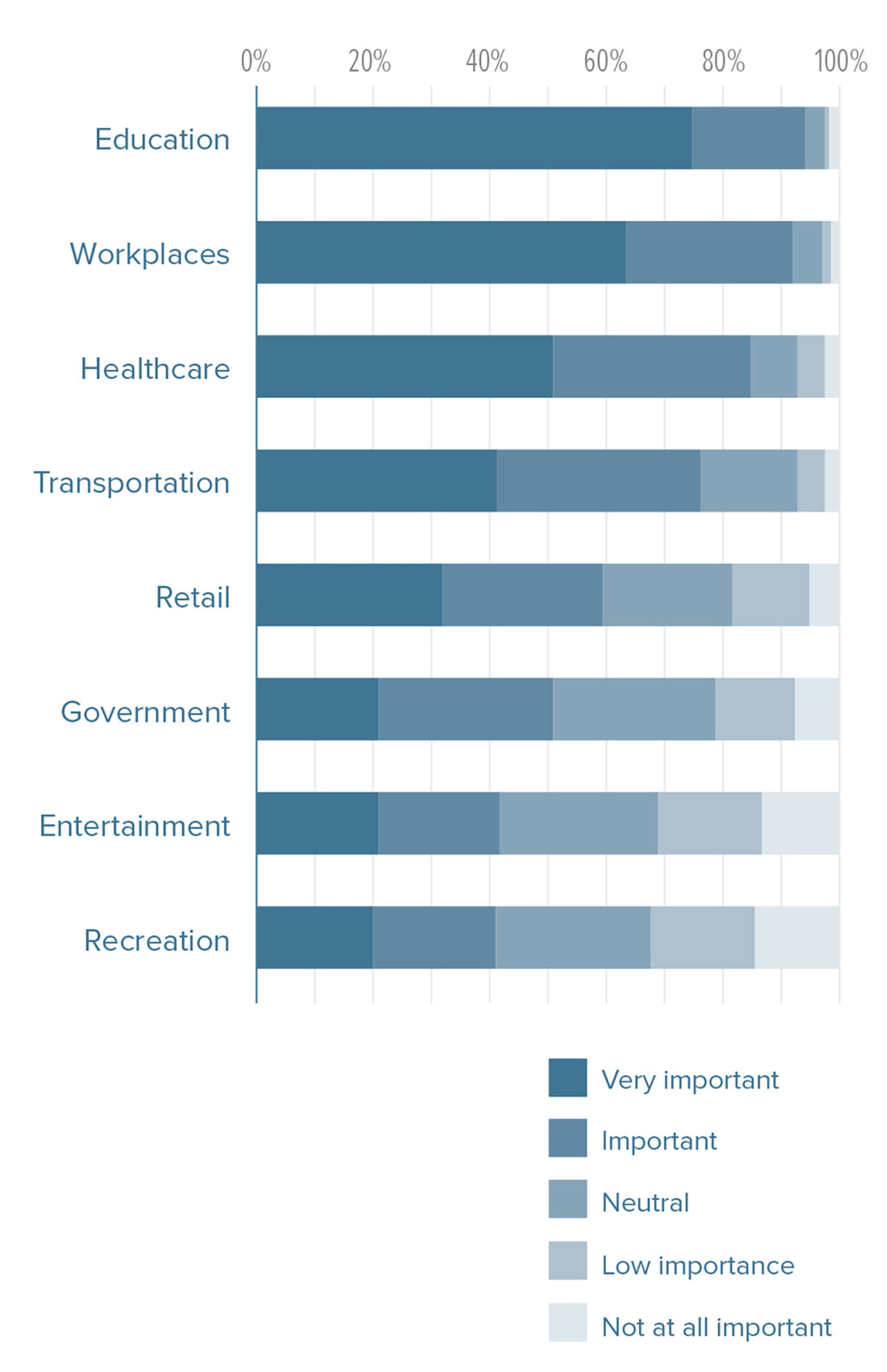
Quiet spaces should be provided in all mainstream public buildings, particularly in places where visitors may be exposed to busy or noisy environments. Research findings have identified educational environments as the most critical location to implement quiet spaces, followed by workplace, healthcare, and transportation environments. Quiet spaces should be kept separate from other areas, such as faith or meeting rooms, to ensure they are readily available to meet the reactive needs of users.
The growing interest in designing for neurodiversity has led to the creation of PAS 6463: Design for the Mind—Neurodiversity and the Built Environment. This standard was sponsored by Buro Happold, Transport for London, BBC Workplace, and Forbo Flooring UK, and is believed to be the first formal standard on neurodiversity. It was recently published by the British Standards Institution (BSI), and is freely available to the general public through the BSI website: bsigroup.com/en-GB/standards/pas-6463.
PAS 6463 covers a broad list of design topics, ranging from sitewide strategies to detailed design. It includes site and building layouts, external spaces, wayfinding, lighting, acoustics, and surface finishes. Chapter 14 focuses on safety, recovery, and quiet spaces, and provides additional information about the design and management of quiet or restorative spaces. The guidance in PAS 6463 is aimed at reducing sensory overload, anxiety, distress, disorientation, and confusion from elements in the built environment through appropriate design and management; it also has a strong overlap with designing for mental well-being.
Other differences within the population that may impact daily needs are also a focus of inclusive design. These include age, sex and gender reassignment, pregnancy and maternity, parenthood, religion or belief, culture, mental health, and social and economic inequities. It is also important to understand the interface between inclusive design and other essential aspects of design—such as sustainability, health and well-being, and social value—to appreciate how they interact and how to resolve conflicting requirements among them.
As inclusive design develops as a discipline, there is a growing realization among design professionals that categorizing people in silos does not reflect reality. Rather, there exists a complex and dynamic continuum with interplay and intersectionality between various categories. It is critical to identify where current barriers exist—be they physical, mental, social, operational, or political—and consider how to eliminate them. They all relate to the design and operation of the built environment, and it is therefore imperative to look at them holistically to create inclusive environments where people can develop equitably and thrive.
TOAR SADIA is a senior inclusive design consultant at Buro Happold and a lecturer on designing inclusive places in the Bartlett School of Environment, Energy and Resources in University College London. She is also a registered architect in the U.S., a certified architect in Israel, and a WELL Accredited Professional. She acquired a master’s in health, well-being, and sustainable buildings from University College London, where she enriched her professional knowledge with the latest expertise regarding healthy, sustainable, and inclusive design.








